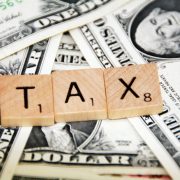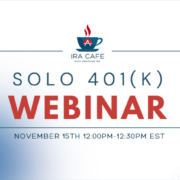Solo 401(k) vs. Self-Directed SEP IRAs: Which is Better for Freelancers?
A freelancer—or anyone with a self-employment income that’s inconsistent—knows that saving for retirement is different for them. There’s no employer matching, because they are the employer. They have to do everything themselves. That usually leads them to two options: a Self-Directed Solo 401(k) or a Self-Directed SEP IRA. But which of these options is more ideal for freelancers? That question is all the more important in the 21st century as more and more workers move to contracting in the gig economy.
The Self-Directed Solo 401(k) for Freelancers
A Self-Directed Solo 401(k) plan, also known as an Individual 401(k), is essentially a 401(k) plan that you hold yourself. That means that there are high contributions, just as with a 401(k) plan at work. And one of the benefits of contributing to a Self-Directed Solo 401(k) plan is that it allows you to deduct these contributions from your taxes, which means you’re investing “pre-tax” money. That’s a vital source of belt-tightening for freelancers who need to make their budgets work.
One of the drawbacks of the Self-Directed Solo 401(k) plan is that it’s not as simple as the alternative. It will likely require more paperwork, since you’re essentially establishing a 401(k) plan, which in itself can be a complicated process.
The Self-Directed SEP IRA for Freelancers
The Self-Directed SEP IRA works similar to a Traditional IRA, but there are some quirks we should note. The contribution limits will be higher. But since this is technically an employee pension plan, you may note that there’s not as much flexibility when it comes to your independence. If you start adding employees to your freelancing enterprise, you will find that there are requirements for holding a company SEP IRA that used to only apply to you.
In both cases, you will have high contribution limits—and if you are maxing out your retirement contribution limits in either account well before retirement, you are probably going to end up just fine, either way. But let’s look at the key differences you might want to consider before opening up these accounts for yourself.
Self-Directed SEP IRA and Self-Directed Solo 401(k): Key Differences
With all the above in mind, which makes the most sense for freelancers? Here are some of the key points to remember:
- Simplicity: Here the Self-Directed SEP IRA It’s the easiest to open and use to get started investing immediately. The Self-Directed Solo 401(k) does require some additional paperwork to set up, but it’s worth noting that this should not be seen as a roadblock, either.
- Contribution limits: If you are making enough money, both contribution limits tend to be high enough. But if you have years in which you do not make as much money as the others, the SEP IRA’s rule of defaulting to a percentage of your earnings can mean that you don’t have as much wiggle room to put money in retirement.
- Expansion: A Solo 401(k) is literally an individual 401(k). If you plan on adding employees, this is not a retirement package that’s going to extend to them. However, if you plan on remaining a solo freelancer, that should not be a problem in the slightest.
Truth be told, both of these options make sense for freelancers. Both retirement accounts will be easy to set up, feature high contribution limits, and will help you start saving for retirement. But you may want to pay attention to the fine print if you want the absolute optimized version of a Self-Directed IRA or Self-Directed 401(k) plan for your retirement. After all, when you freelance, it’s all up to you. When you are the boss, the tough decisions are yours.
Interested in learning more about Self-Directed IRAs? Contact American IRA, LLC at 866-7500-IRA (472) for a free consultation. Download our free guides or visit us online at www.AmericanIRA.com.











